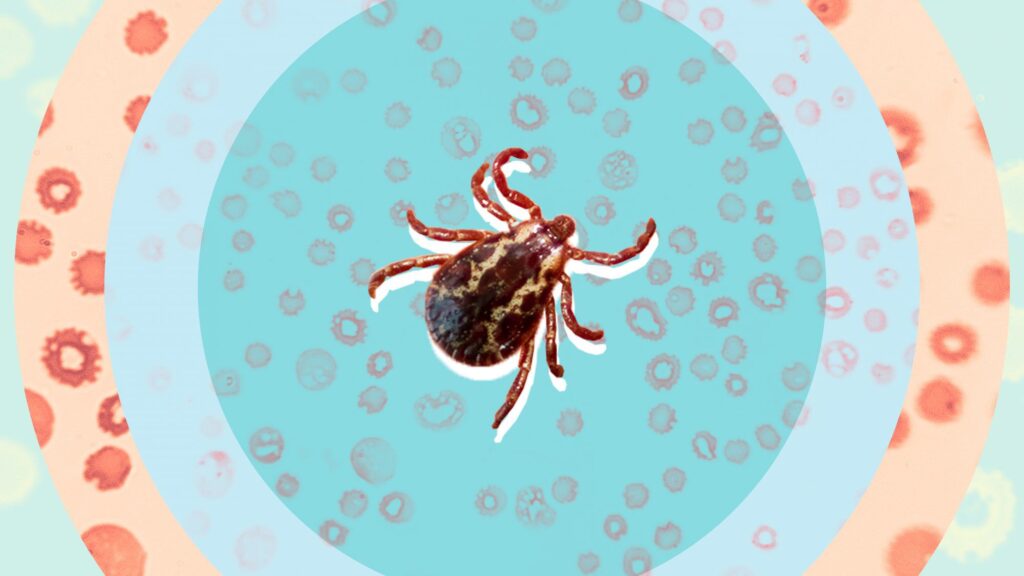Rising Cases of Anaplasmosis in Canada: What You Need to Know
Increasing Incidence Across Provinces
In recent years, experts have observed a significant rise in anaplasmosis cases across Canada, particularly in Nova Scotia, Quebec, and Ontario.
Each of these provinces now reports approximately 500 cases annually.
Anaplasmosis is a bacterial infection transmitted by black-legged ticks, the same vectors responsible for spreading Lyme disease.
Understanding Anaplasmosis
Anaplasmosis is caused by the bacterium Anaplasma phagocytophilum, which infects white blood cells in humans and animals.
The disease has seen a marked increase in human cases since the early 2000s, with up to 500 cases per year now reported in regions where anaplasma-carrying ticks are prevalent.
Key Symptoms and Transmission

Early symptoms of anaplasmosis include fever, chills, headache, and fatigue.
Without treatment, the disease can progress to cause severe complications such as respiratory failure, anemia, liver disease, and even death, particularly in immunocompromised individuals, children, and the elderly.
Infection typically occurs after a tick has been attached and feeding for about 18 hours.
Anaplasmosis can also be transmitted through blood transfusions, solid organ donations, and potentially from mother to baby.
Comparison to Lyme Disease
Anaplasmosis and Lyme disease share many early symptoms, such as flu-like manifestations.
Both diseases are spread by black-legged and Western black-legged ticks, and co-infections are possible.
Unlike Lyme disease, anaplasmosis does not produce a bull’s-eye rash. However, both conditions are treatable with the antibiotic doxycycline.
Patients treated for anaplasmosis generally recover without the long-term effects seen in some Lyme disease cases.
Prevention Strategies
Preventing tick bites is the most effective way to avoid anaplasmosis, as no vaccine exists for this disease.
Effective measures include using tick-specific bug sprays, wearing protective clothing, and performing regular tick checks after spending time in grassy or wooded areas.
Recognizing and Responding to Tick Bites
Prompt removal of ticks with tweezers can reduce the risk of infection.
Keeping the tick for potential testing is advisable.
Tools like eTick can help identify tick species and high-risk areas.
Detailed Conclusion: Staying Safe Outdoors
As the prevalence of anaplasmosis rises in Canada, awareness and preventive measures become crucial.
Canadians should be vigilant about tick bites, especially in high-risk regions like Nova Scotia, Quebec, and Ontario.
Regular tick checks, protective clothing, and prompt removal of ticks are essential steps in reducing the risk of tick-borne diseases.
Despite the growing presence of ticks, Canadians are encouraged to enjoy outdoor activities while taking appropriate precautions.
If bitten, it’s important to monitor for flu-like symptoms and seek medical help promptly to ensure timely treatment and recovery.
Also, Read- UK Teen Becomes World’s First to Receive Groundbreaking Brain Implant for Epilepsy Control

Meet Dr. Vijay Gangle, a final year MBBS student with a passion for promoting health and wellness. With a keen understanding of health and diseases, Dr. Gangle dedicates his time to researching and reviewing various health products. His insightful analyses delve into the ingredients, quality, and suitability of these products for maintaining optimal health. Through his reviews, Dr. Gangle aims to empower individuals with the knowledge they need to make informed decisions about their well-being. Join him on his journey to uncovering the best solutions for a healthier life."


